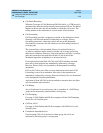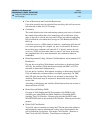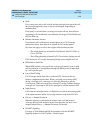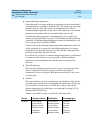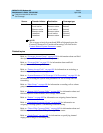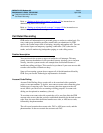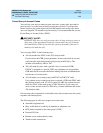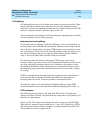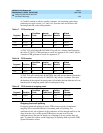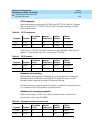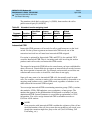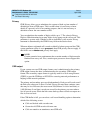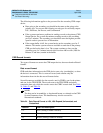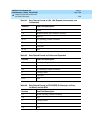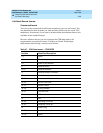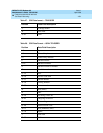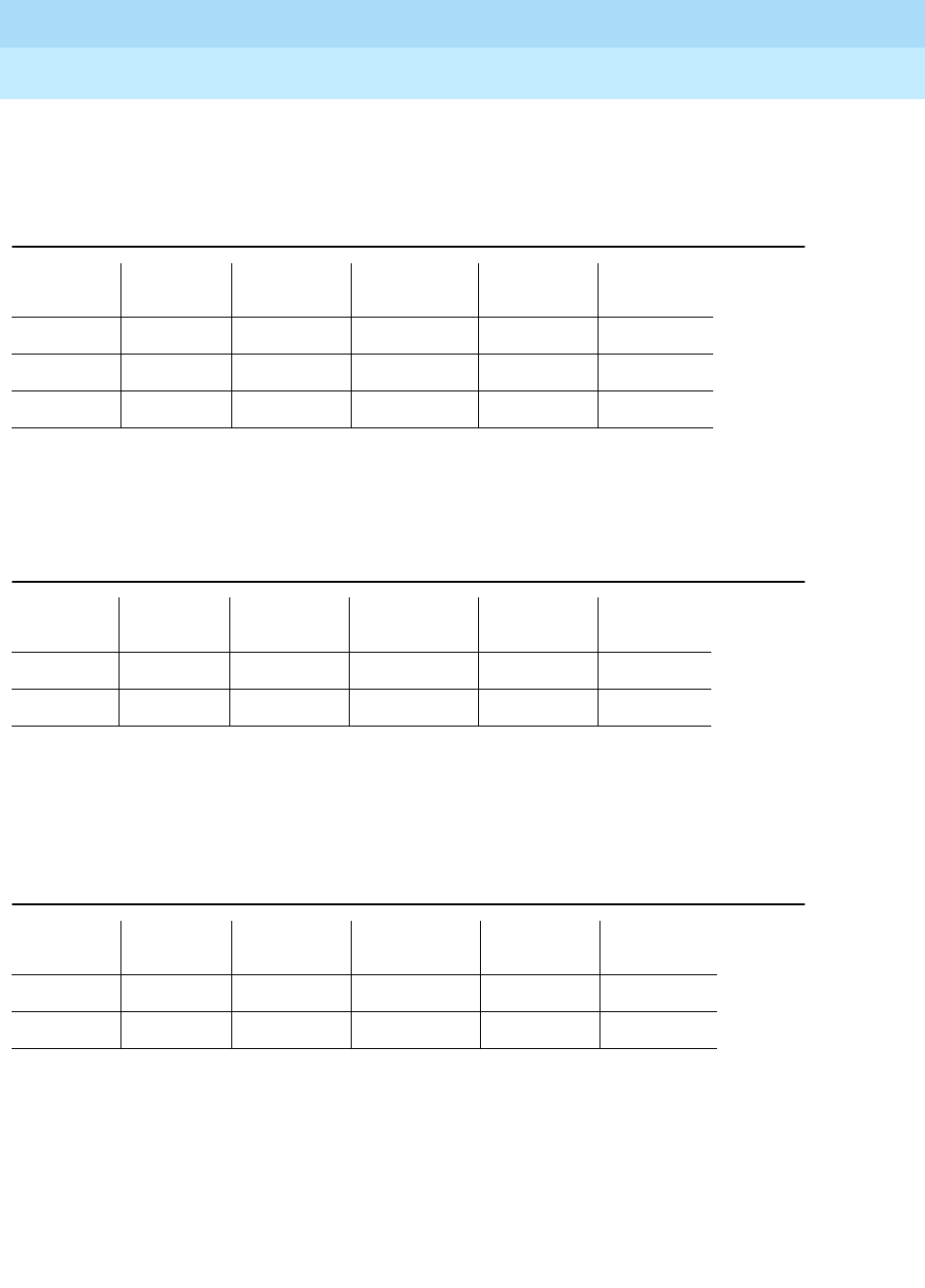
DEFINITY ECS Release 8.2
Administrator’s Guide
555-233-506
Issue 1
April 2000
Features and technical reference
1224Call Detail Recording
20
A, C and D continue to talk for another 5 minutes. All remaining parties drop,
producing two more records; A–C and A–D. Note that each record shows the
incoming trunk ID as the calling number.
A (TAC 123) calls Station B (5657890). They talk for 1 minute, then B transfers
the call to C (54321). CDR generates a record for segment A–B. A and C talk for
5 minutes. CDR generates a record for segment A–C.
A (TAC 123) calls switch party B (5657890), they talk for one minute. B transfers
the call to public-network party C (5665555), they talk for 4 minutes. Note that
the duration of the original incoming trunk call includes the time after the call was
transferred to an outgoing trunk, until all trunk parties drop.
Outgoing trunk call splitting
If outgoing trunk call splitting is active, CDR creates records of transferred
outgoing calls as described above for incoming trunk call splitting. For
conferenced calls, the originator of the conference will be charged until he or she
drops from the call, at which point CDR begins a second record for the
conferenced user. Records for parties on a conference do not overlap; they are
split. To enable this option, set the Outgoing Call Splitting field to
y on the CDR
System Parameters screen.
Table 17. ITCS conference
Segment Duration
Condition
Code
Access
Code Used
Calling
Number
Dialed
Number
A–B 0:10:0 C 123 5657890
A–C 0:13:0 C 123 54321
A–D 0:13:0 C 123 59876
Table 18. ITCS transfer
Segment Duration
Condition
Code
Access
Code Used
Calling
Number
Dialed
Number
A–B 0:01:0 9 123 5657890
A–C 0:05:0 9 123 54321
Table 19. ITCS transfer to outgoing trunk
Segment Duration
Condition
Code
Access
Code Used
Calling
Number
Dialed
Number
A–B 0:05:0 9 123 5657890
A–C 0:04:0 9 345 123 5665555



